Abstract
Energy metabolism in Dictyostelium discoideum was studied by following the incorporation of [3H]adenine and [32P]Pi into the intracellular adenine nucleotides at two stages of differentiation. That the levels of nucleotides measured represented levels present in vivo was shown by demonstrating that the concentrations determined from cells quickly frozen in liquid nitrogen were identical to those from cells harvested and subsequently killed in perchloric acid. In addition, significant compartmentalization among the nucleoside triphosphates was not observed after 30 min, since uridine triphosphate, guanosine triphosphate, and adenosine triphosphate (ATP) were at radioactive equilibrium after exposure to [32P]Pi. At the sorocarp stage of differentiation, the dominant role of adenylate kinase activity is indicated by the observations that (i) adenylate kinase activity was found to be present, (ii) the specific radioactivities of the beta- and gamma-phosphates of ATP were equal, (iii) the increase in specific radioactivity of adenosine diphosphate was one-half that of ATP in the presence of [32P]Pi, and (iv) the steady-state equilibrium constant calculated (0.69) from the nucleotide levels equaled that of the apparent equilibrium constant reported in the literature (0.70). By using the same criteria, adenylate kinase activity was not the predominant reaction establishing the adenine nucleotide levels in cells at the pseudoplasmodium stage of differentiation.
Full text
PDF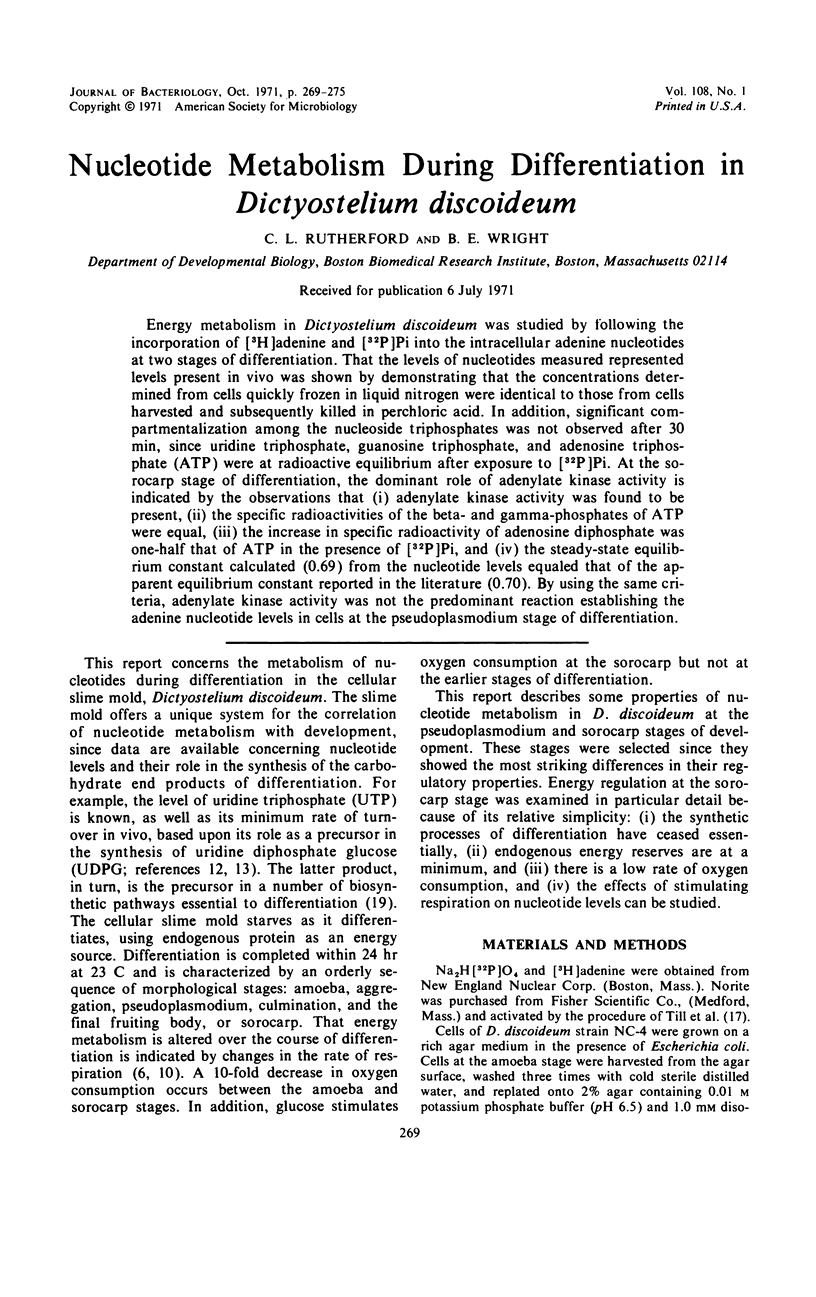
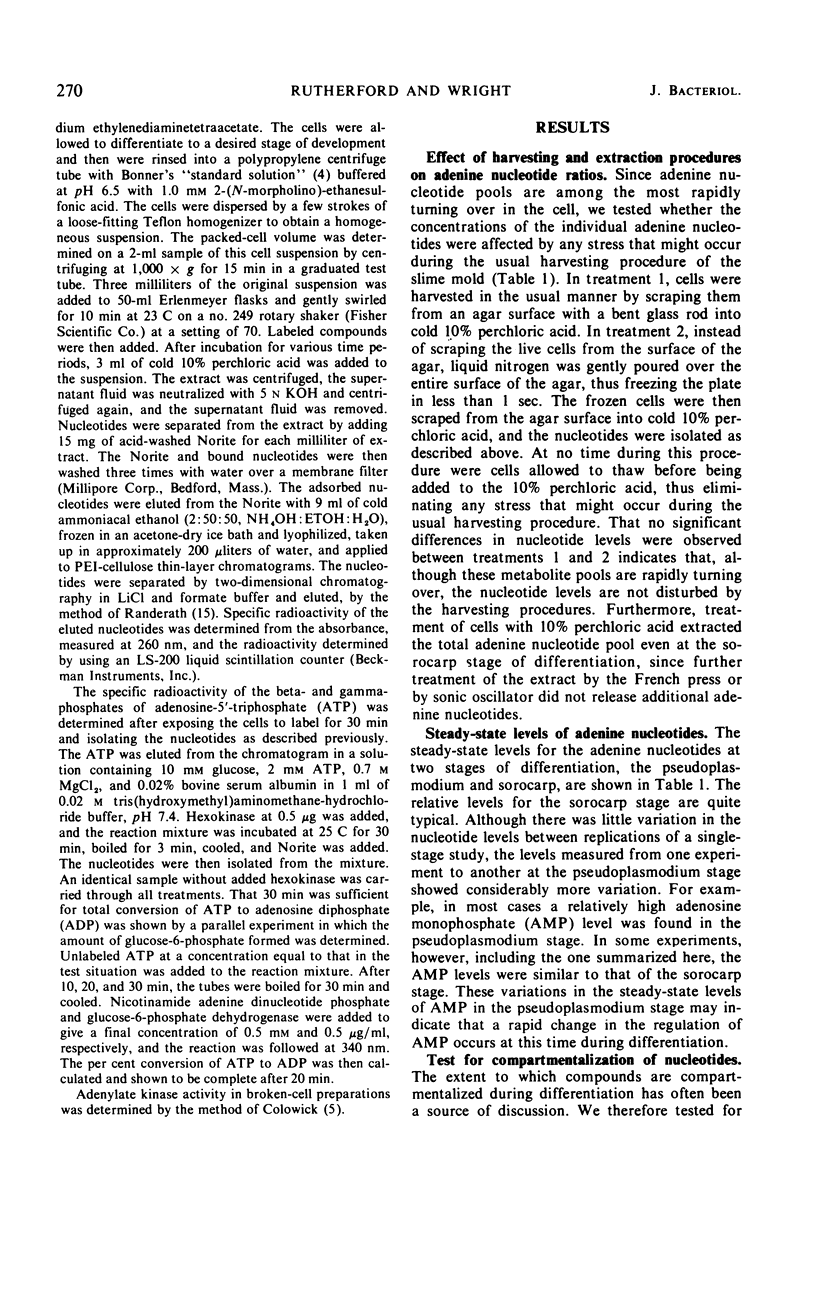
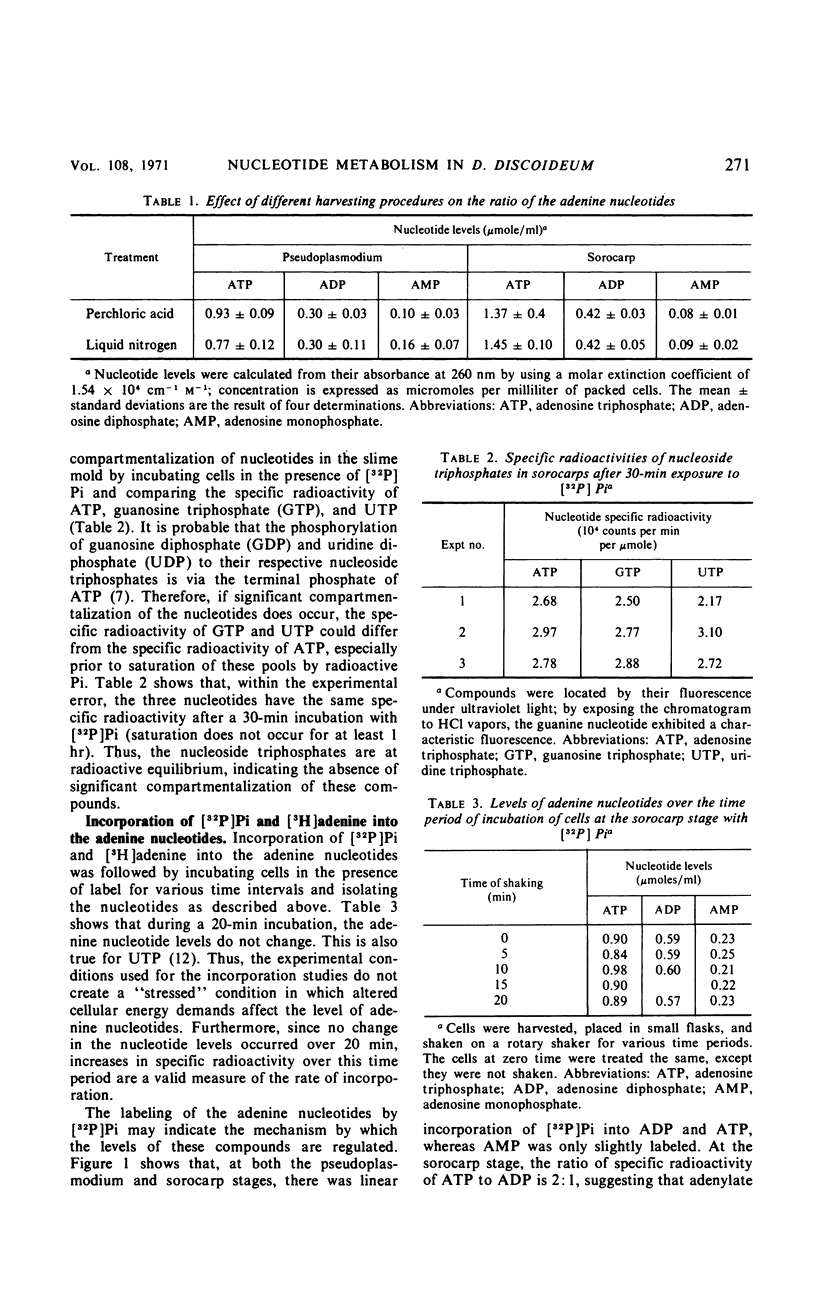
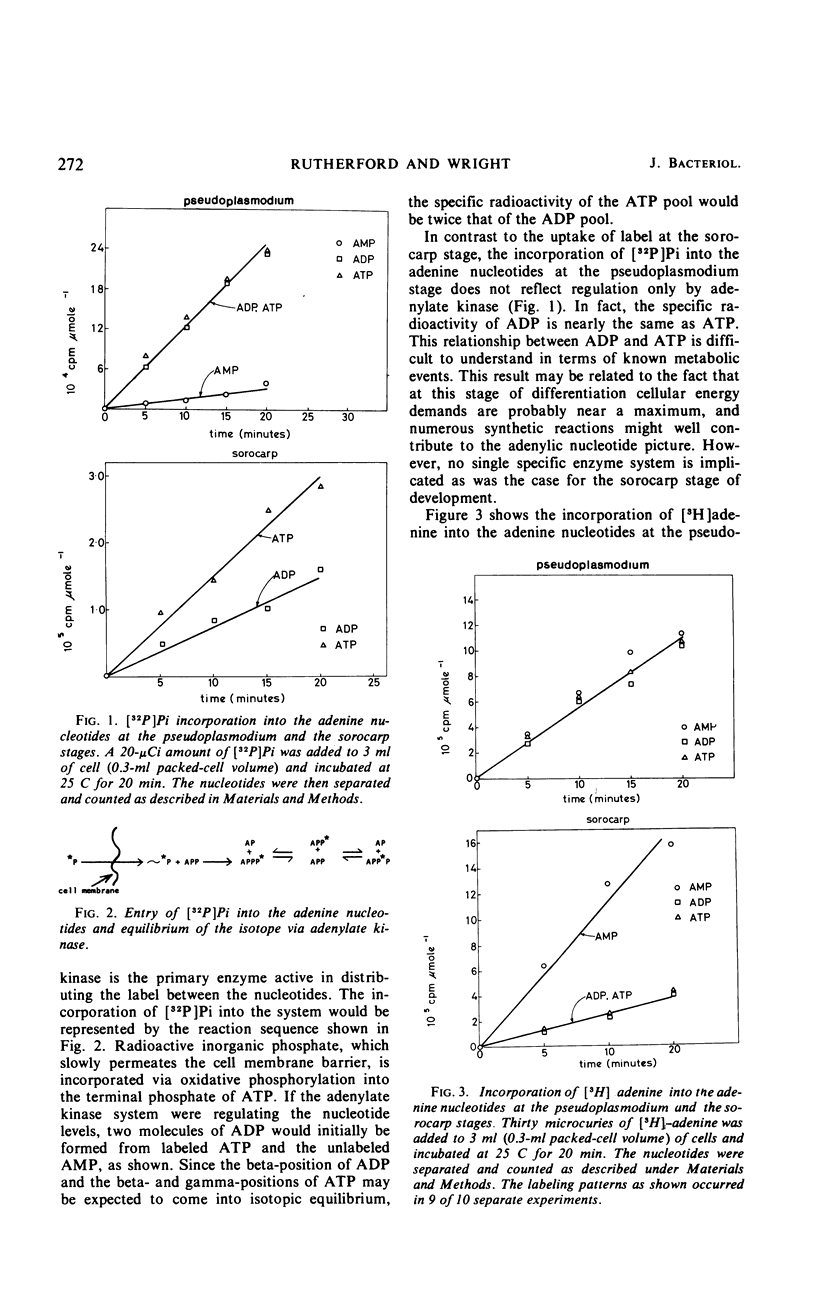
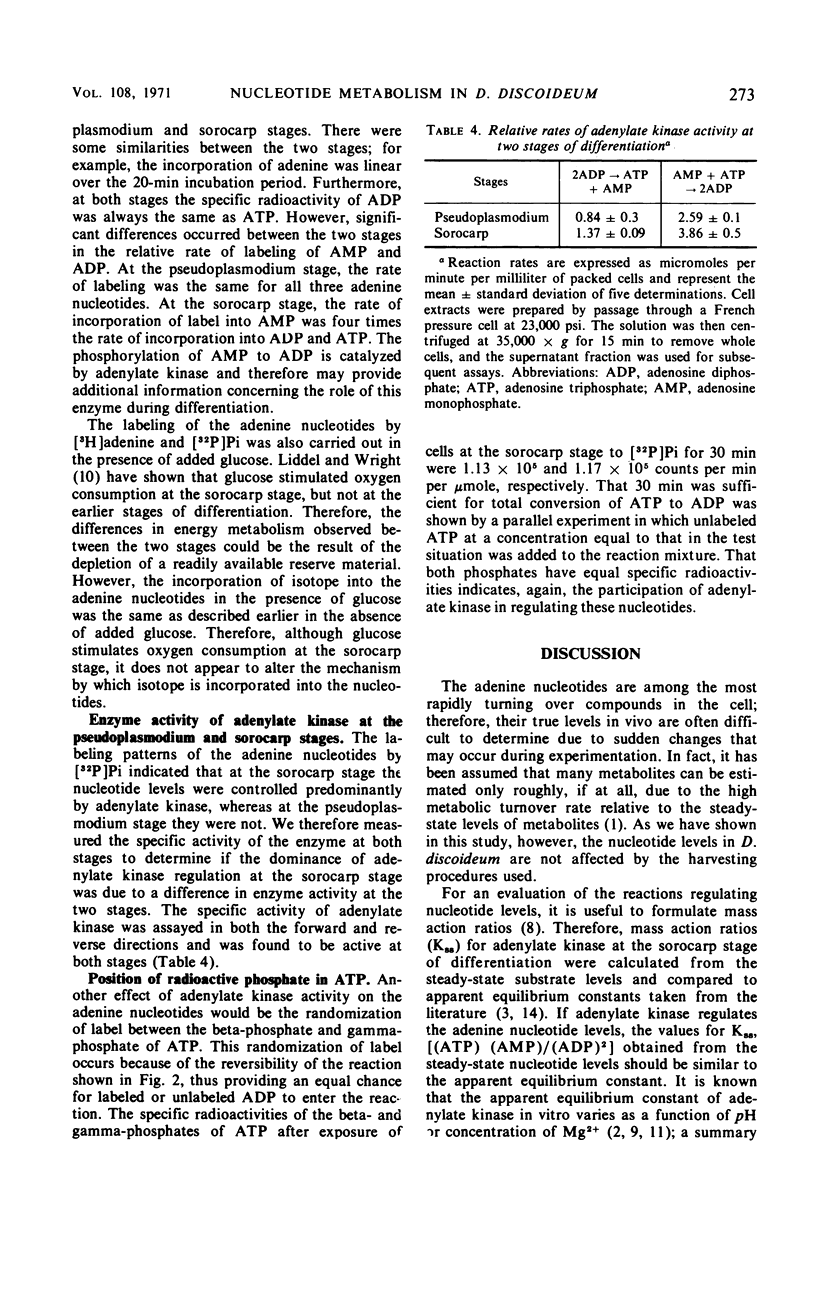
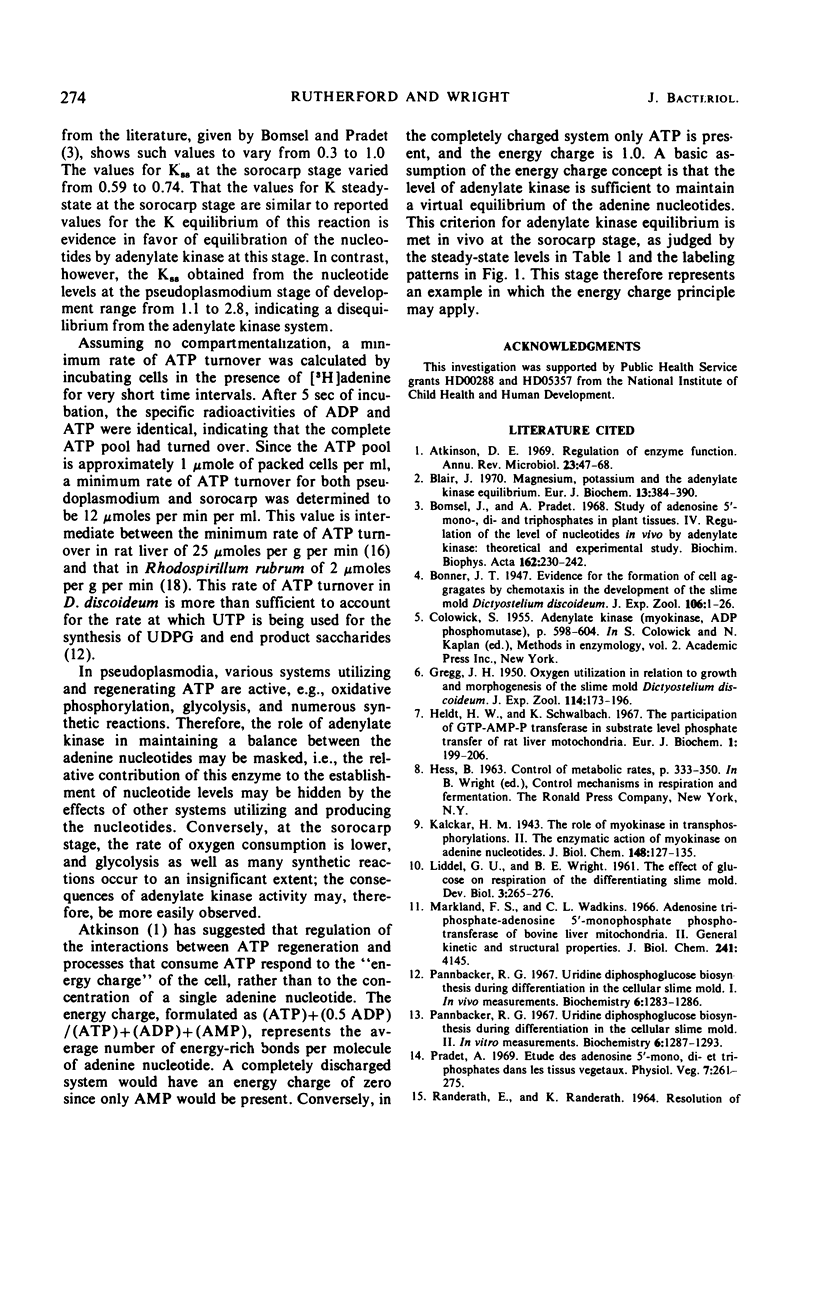

Selected References
These references are in PubMed. This may not be the complete list of references from this article.
- Atkinson D. E. Regulation of enzyme function. Annu Rev Microbiol. 1969;23:47–68. doi: 10.1146/annurev.mi.23.100169.000403. [DOI] [PubMed] [Google Scholar]
- Blair J. M. Magnesium, potassium, and the adenylate kinase equilibrium. Magnesium as a feedback signal from the adenine nucleotide pool. Eur J Biochem. 1970 Apr;13(2):384–390. doi: 10.1111/j.1432-1033.1970.tb00940.x. [DOI] [PubMed] [Google Scholar]
- Bomsel J. L., Pradet A. Study of adenosine 5'-mono-,di- and triphosphates in plant tissues. IV. Regulation of the level of nucleotides, in vivo, by adenylate kinase: theoretical and experimental study. Biochim Biophys Acta. 1968 Aug 20;162(2):230–242. doi: 10.1016/0005-2728(68)90105-9. [DOI] [PubMed] [Google Scholar]
- Heldt H. W., Schwalbach K. The participation of GTP-AMP-P transferase in substrate level phosphate transfer of rat liver mitochondria. Eur J Biochem. 1967 Apr;1(2):199–206. doi: 10.1007/978-3-662-25813-2_31. [DOI] [PubMed] [Google Scholar]
- LIDDEL G. U., WRIGHT B. E. The effect of glucose on respiration of the differentiating slime mold. Dev Biol. 1961 Jun;3:265–276. doi: 10.1016/0012-1606(61)90047-1. [DOI] [PubMed] [Google Scholar]
- Markland F. S., Wadkins C. L. Adenosine triphosphate-adenosine 5'-monophosphate phosphotransferase of bovine liver mitochondria. II. General kinetic and structural properties. J Biol Chem. 1966 Sep 25;241(18):4136–4145. [PubMed] [Google Scholar]
- Pannbacker R. G. Uridine diphosphoglucose biosynthesis during differentiation in the cellular slime mold. I. In vivo measurements. Biochemistry. 1967 May;6(5):1283–1286. doi: 10.1021/bi00857a008. [DOI] [PubMed] [Google Scholar]
- Pannbacker R. G. Uridine diphosphoglucose biosynthesis during differentiation in the cellular slime mold. II. In vitro measurements. Biochemistry. 1967 May;6(5):1287–1293. doi: 10.1021/bi00857a009. [DOI] [PubMed] [Google Scholar]
- RANDERATH E., RANDERATH K. RESOLUTION OF COMPLEX NUCLEOTIDE MIXTURES BY TWO-DIMENSIONAL ANION-EXCHANGE THIN-LAYER CHROMATOGRAPHY. J Chromatogr. 1964 Oct;16:126–129. doi: 10.1016/s0021-9673(01)82446-8. [DOI] [PubMed] [Google Scholar]
- Reich J. G., Till U., Günther J., Zahn D., Tschisgale M., Frunder H. Enzymic flux rates in vivo through the Embden-Meyerhof pathway and the nucleotides of the mouse liver. Eur J Biochem. 1968 Nov;6(3):384–394. doi: 10.1111/j.1432-1033.1968.tb00459.x. [DOI] [PubMed] [Google Scholar]
- Till U., Blume E., Günther J., Reich J. G., Zahn D., Klinger R., Jaroszewicz K., Frunder H. Determination of specific radioactivities of mononucleotides and glycolytic intermediates from mouse liver after labelling in vivo with [32P]orthophosphate. Eur J Biochem. 1968 Nov;6(3):373–383. doi: 10.1111/j.1432-1033.1968.tb00458.x. [DOI] [PubMed] [Google Scholar]
- Welsch F., Smith L. Kinetics of synthesis and utilization of adenosine triphosphate by intact cells of Rhodospirillum rubrum. Biochemistry. 1969 Aug;8(8):3403–3408. doi: 10.1021/bi00836a039. [DOI] [PubMed] [Google Scholar]
- Wright B. E. Multiple causes and controls in differentiation. Science. 1966 Aug 19;153(3738):830–837. doi: 10.1126/science.153.3738.830. [DOI] [PubMed] [Google Scholar]


